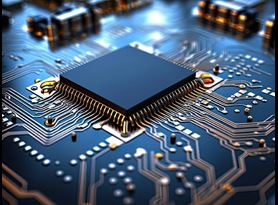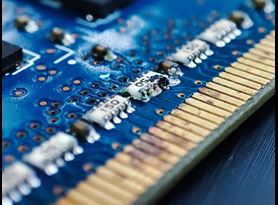Ensure your printed circuit boards are free of contaminants that may cause corrosion, shorting, and product failure.
Cleanliness testing for printed circuit boards and assemblies encompasses the analysis of a specimen to determine the type or amount of contaminant materials present. Contaminant materials can be potentially anything: large or small, unknown, known, expected, or unexpected to the analyst or the requestor. The use of various analytical techniques for PCB cleanliness testing can assist in determining what material is present, how much of it exists, and whether it can have a deleterious effect on your product.
PCB cleanliness testing techniques
Depending on your requirements, the experts at Element may use several different techniques to evaluate the cleanliness of your PCB, including:
- Fourier Transform Infrared (FTIR) spectroscopy is a non-destructive technique usually employed when a contaminant is believed to have an organic component. Such contaminant materials are often an issue for assembly-level samples, such as materials that could lead to corrosion, resulting in a high-resistance short.
- Ion Chromatography (IC) provides cleanliness-related data for specific ionic species selected for testing. Similar to FTIR, certain ionic species of interest can lead to corrosion or cause electrical performance issues.
- Resistivity of Solvent Extract (ROSE) Testing provides a quick and easy quantification of overall printed circuit board/assembly cleanliness. Using a simple resistivity (or conductivity) meter, the ROSE test provides a quick assessment of overall cleanliness and produces a singular value to rate cleanliness. ROSE is the workhorse of cleanliness testing because of its many widely recognized advantages, including its low cost.
- Scanning Electron Microscopy / Energy Dispersive X-Ray Spectroscopy (SEM/EDS) analysis is a high-tech testing technique typically paired with the FTIR technique to investigate a contaminant that is believed to have an inorganic or metallic component. The SEM/EDS technique provides both visual and elemental information about an area of interest.
Why choose Element?
Element is among the largest testing laboratory networks in North America; providing a complete range of cutting-edge services. We offer fast, accurate, and efficient FTIR, IC, ROSE, and SEM/EDS cleanliness testing delivered by our trusted team of technicians.
Need information on specific test programs? Contact our experts to ask questions and learn how we can support your needs.
Learn more

Printed Circuit Board Testing
Ensure your printed circuit boards and finished printed circuit assemblies are of the highest quality and compliant with relevant standards with comprehensive PCB testing from Element.

Printed Circuit Board (PCB) Failure Analysis
Understand and rectify the root causes of PCB failure with industry-leading PCB failure analysis from the testing experts at Element.

IPC Testing & Certification
Element is accredited by IPC to inspect and test printed boards, components, and materials, and to validate products subject to IPC standards.

Surface Insulation Resistance (SIR) Testing
Measure the reliability of your printed circuit boards under real-world temperature and humidity conditions with surface insulation resistance (SIR) testing from Element.

